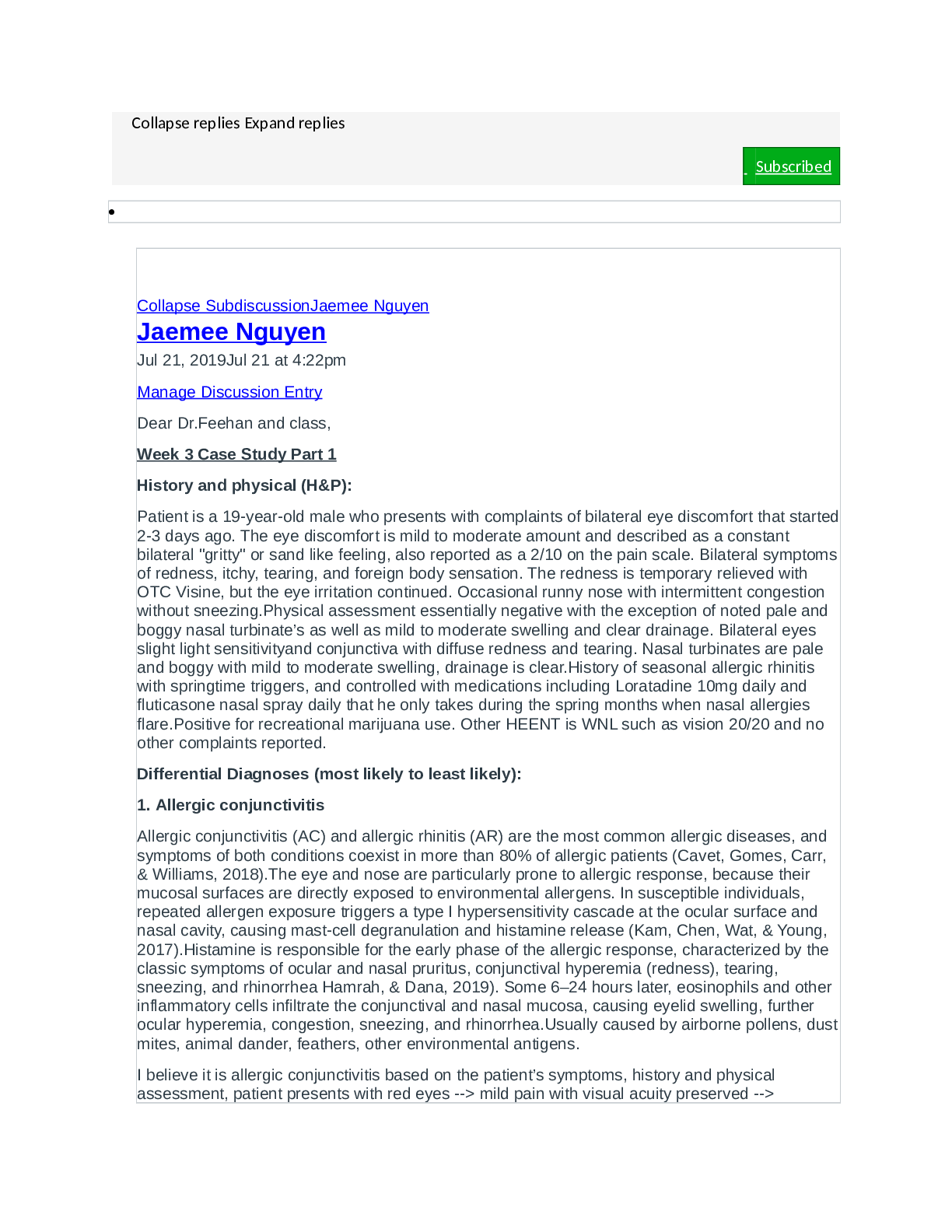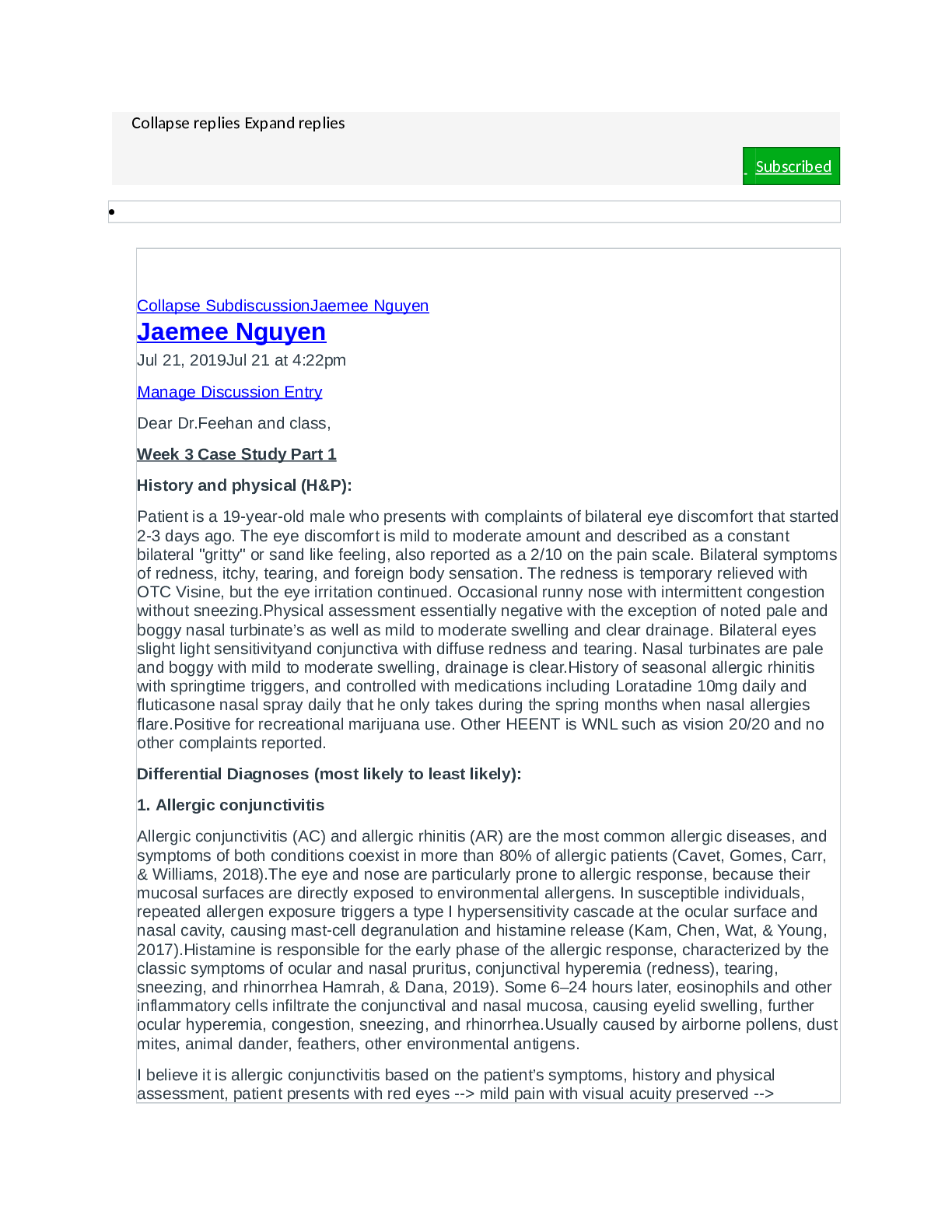Collapse replies Expand replies
Subscribed
Collapse SubdiscussionJaemee Nguyen
Jaemee Nguyen
Jul 21, 2019Jul 21 at 4:22pm
Manage Discussion Entry
Dear Dr.Feehan and class,
Week 3 Case Study Part 1
History and physical (H&P):
Patient is a 19-year-old male who presents with complaints of bilateral eye discomfort that started
2-3 days ago. The eye discomfort is mild to moderate amount and described as a constant
bilateral "gritty" or sand like feeling, also reported as a 2/10 on the pain scale. Bilateral symptoms
of redness, itchy, tearing, and foreign body sensation. The redness is temporary relieved with
OTC Visine, but the eye irritation continued. Occasional runny nose with intermittent congestion
without sneezing.Physical assessment essentially negative with the exception of noted pale and
boggy nasal turbinate’s as well as mild to moderate swelling and clear drainage. Bilateral eyes
slight light sensitivityand conjunctiva with diffuse redness and tearing. Nasal turbinates are pale
and boggy with mild to moderate swelling, drainage is clear.History of seasonal allergic rhinitis
with springtime triggers, and controlled with medications including Loratadine 10mg daily and
fluticasone nasal spray daily that he only takes during the spring months when nasal allergies
flare.Positive for recreational marijuana use. Other HEENT is WNL such as vision 20/20 and no
other complaints reported.
Differential Diagnoses (most likely to least likely):
1. Allergic conjunctivitis
Allergic conjunctivitis (AC) and allergic rhinitis (AR) are the most common allergic diseases, and
symptoms of both conditions coexist in more than 80% of allergic patients (Cavet, Gomes, Carr,
& Williams, 2018).The eye and nose are particularly prone to allergic response, because their
mucosal surfaces are directly exposed to environmental allergens. In susceptible individuals,
repeated allergen exposure triggers a type I hypersensitivity cascade at the ocular surface and
nasal cavity, causing mast-cell degranulation and histamine release (Kam, Chen, Wat, & Young,
2017).Histamine is responsible for the early phase of the allergic response, characterized by the
classic symptoms of ocular and nasal pruritus, conjunctival hyperemia (redness), tearing,
sneezing, and rhinorrhea Hamrah, & Dana, 2019). Some 6–24 hours later, eosinophils and other
inflammatory cells infiltrate the conjunctival and nasal mucosa, causing eyelid swelling, further
ocular hyperemia, congestion, sneezing, and rhinorrhea.Usually caused by airborne pollens, dust
mites, animal dander, feathers, other environmental antigens.
I believe it is allergic conjunctivitis based on the patient’s symptoms, history and physical
assessment, patient presents with red eyes --> mild pain with visual acuity preserved -->
hyperemia®diffuse --> discharge continuous watery --> moderate itching --> allergic
conjunctivitis.
Read More


